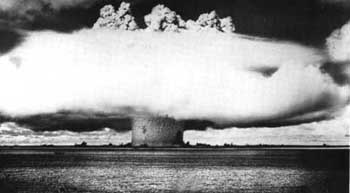| Robert
L Mott's
Nine Components of Sound Listed below are nine components that most influence how sound effects are perceived. By modifying or eliminating any one or a combination of these components, the sound effects are changed or totally new sounds are created. "Music components": "Sound envelope components": "Record and playback component":Envelope of sound and Speed: The pitch of a sound is determined by the frequency of the sound. Normally we refer to its pitch. Frequencies are grouped as ..
Humans are most sensitive to midrange frequencies.
Timbre is that unique combination of fundamental
frequency, harmonics, and overtones that gives each voice, musical instrument,
and sound effect its unique coloring and character.
When a object vibrates it propagates sound waves of a certain frequency. This frequency, in turn, sets in motion frequency waves called harmonics. The basic frequency and its resultant harmonics determine the timbre of a sound. The greater the number of harmonics, the more interesting is the sound that is produced. It is an object's ability to vibrate and set up harmonics that determines the pleasantness of the resultant sound. Crystal glass set up harmonics that are more pleasant than harmonics of ordinary glass. The combination of fundamental frequency
and its harmonics is a complex wave form.
The loudness of a sound depends on the intensity of the sound stimulus. A dynamite explosion is loader than that of a cap pistol because of the greater amount of air molecules the dynamite is capable of displacing. Loudness becomes meaningful only if we are able to compare it with something. The sound of a gunshot may be deafening in a small room, but actually go unnoticed if fired in a subway station when a train is roaring past. (A film that use this in the narrative is Sleepers - when a man is shot at the same time as an aircraft is landing) "Equal loudness"
When two sounds, a bass sound and a middle range sound are played at the same decibel, the listener perceive the middle range sound to be louder. This is why a clap of thunder in a horror
movie may contain something so unweatherlike as a woman's scream.
Rhythm is a recurring sound that alternates between strong and weak elements. Wooden pegs, suspended by wires in a wooden
frame to suggest the sound of a large group of people marching in order,
will be believable if correct rhythm is supplied. If the rhythmic cadence
were ignored the wooden pegs would sound like wooden pegs drummed mechanically
on a wooden surface.
An envelope of sound is composed of a sound's attack, sustain, and decay. The way a sound is initiated is called attack. There are two types of attack: Fast attackThe closer the attack of a sound (A) is to the peak (B) of a sound, the faster its attack is. Sounds that have a fast attack are..
Sounds that have a slow attack take longer to build to the sustain level. Sounds that have a slow attack are…
Once a sound has reached its peak, the length of time that the sound will sustain is dependent upon the energy from the source vibrations. When the source sound stops, the sound will began to decay. Manipulating the sustain time of a sound is yet another way of either modifying a sound or create a totally new one. Suppose you got a the sound of an elevator starting, running, and stopping, all within 25 seconds, but the script calls for a scene to be played in an elevator that runs for 60 seconds. Edit the sustain portion - make a it into a loop. (If you got a computer just copy and past) Take care to avoid sudden burst of level changes. The decrease in amplitude when a vibrating force has been removed is called decay. The actual time it takes for a sound to diminish to silence is the decay time. How gradual this sound decays is its rate of decay. Listening to a sound tells if it is...
- little decay and with very little or no reverberation
- long decay with an echo An advice:
By increasing or decreasing the playback speed you can change the properties of a sound effect. Played at twice as fast as the recorded speed ..
Sound of an Atomic Bomb Detonation
What sound will match ...
- dynamite explosion of a building being detonated Sustain and Decay
Speed
Therefore, the fact that waterfall record was selected is of no consequence. One sound of waterfall is much the same as any other waterfall sound. The only thing that are interesting in as far as sound effects are concerned is the magnitude of the waterfall - its roaring power. (The actual sound source may even be a train roaring through a station.) Because this sound offer no identification other than a constant roar it can readily be adapted for other sounds. When a believable sound is matched to a picture there is never any doubt in anyone's mind that the sound is not authentic. If the sound is a shade to fast or slow, it will cause many viewers to think that "something" was not quite right. Not one viewer, not one critic, not even the scientists who actually developed the bomb complained about this odd mixture of sounds when they appeared on the TV news in the early 1950s. What everyone heard matched convincingly the picture. One aspect of this audiovisual phenomena is synchresis.
1.
A record was slowed from 78 rpm to approximately 30 rpm.
Edited excerpts p 53 -70 "What is a sound effect?" Robert L Mott: Sound effects, Radio, TV, and Film
|


